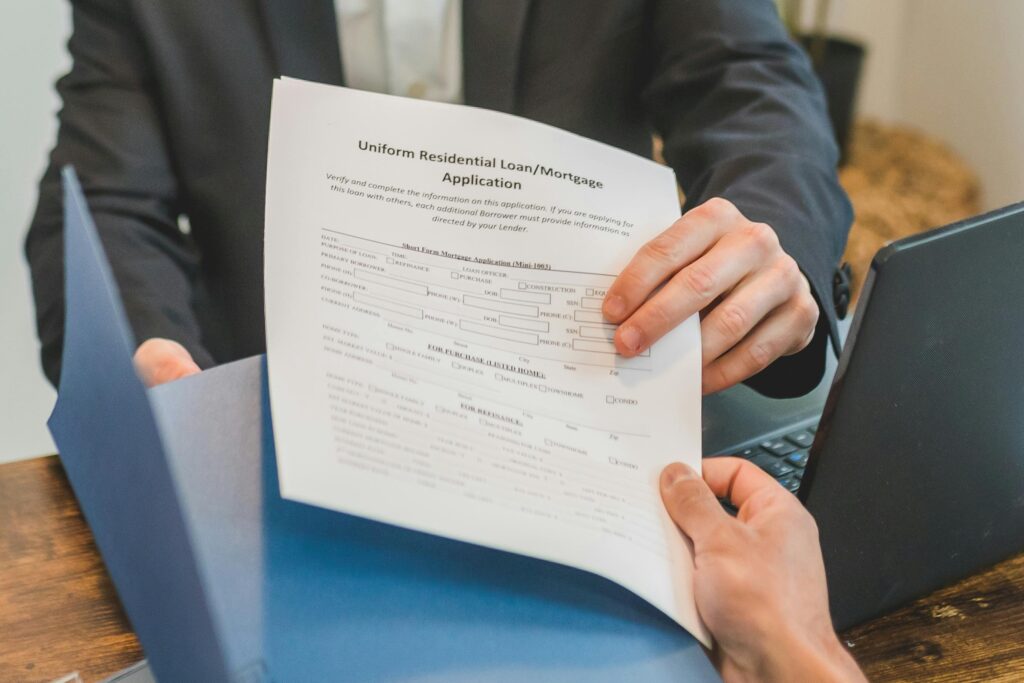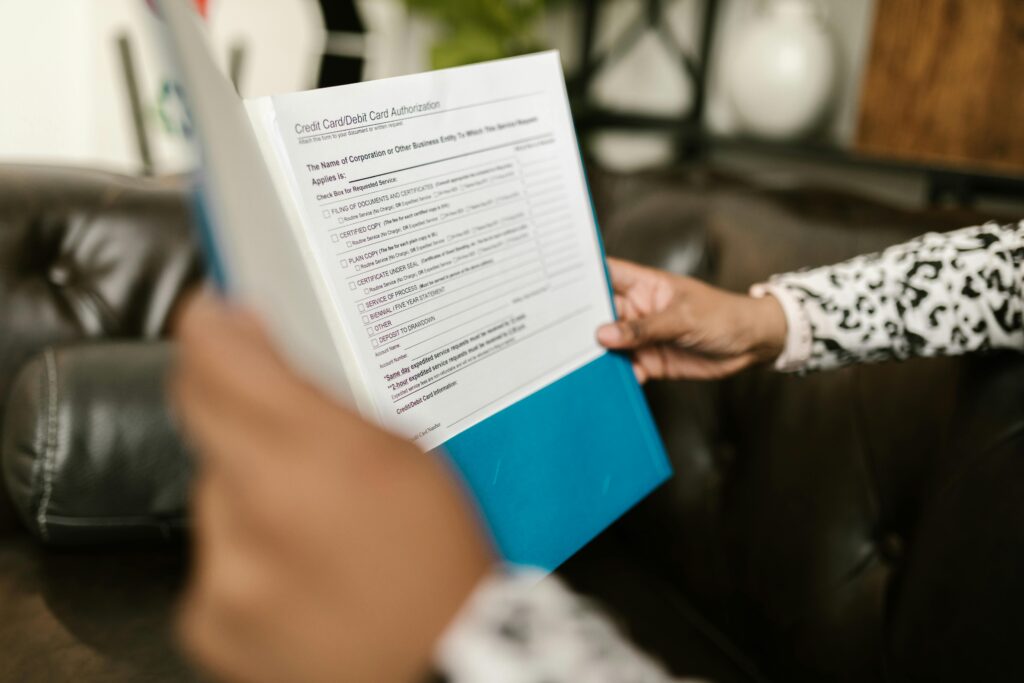If you’re a founder or engineer, your brain is probably packed with problems you’re solving, not how to write a patent. That’s okay. But here’s the thing—if you don’t protect your invention early, someone else might beat you to it. Or worse, your startup might lose its edge before it even gets off the ground.
What Is an Invention Disclosure, Really?
The Start of the IP Journey
Let’s make this super simple. An invention disclosure is just a way to say: “Here’s what I built, how it works, and why it’s new.”
Think of it like writing down the secret sauce behind your product. Not the marketing spin.
Not the pitch deck fluff. The real stuff. The core of your innovation.
That includes the technical steps, the process, the components—whatever makes your idea different and valuable.
This is step one. It’s where you move from “I built something cool” to “I should probably protect this before someone copies it.”
But here’s where most people freeze. They’re unsure what to include. They don’t want to mess it up. So they delay. Or worse, they skip it entirely.
That’s risky. Really risky. Because without a proper disclosure, your invention can slip through the cracks.
You could lose your rights just because you didn’t write it down the right way—or on time.
Now here’s the good news: AI can help make that first step way easier.
Why AI Changes the Game for Inventors
The hard part of writing an invention disclosure is that it forces you to explain your thinking in words.
Most engineers and founders are used to writing code or building products—not crafting legal docs.
That’s where AI steps in as your co-pilot.
Instead of trying to write a full technical breakdown from scratch, AI helps you extract the right details.
You describe what you built in simple terms—just like you’d tell a teammate or investor.
And then, the AI helps structure and expand that into something usable for a patent.
It’s like having a patent-savvy assistant who never sleeps, doesn’t charge hourly, and knows how to translate your technical brain into language that holds up in front of a patent examiner.
With PowerPatent, you don’t just get an AI tool—you get a process that guides you from idea to protection, with a human expert backing it all up.
That’s the real magic. Speed without risk. Smarts without legalese.
From Brain to Disclosure: What It Looks Like
Here’s how it plays out in real life.
You finish building something. Maybe it’s a new algorithm, a clever workflow, or a unique hardware configuration.
You log into PowerPatent and answer a few smart prompts.
These questions are built to pull out the key stuff—how it works, why it’s different, what problems it solves.
You don’t have to overthink it. You just tell your story.
The AI takes that input and starts shaping it into a full disclosure. It connects dots, suggests structure, and fills in the blanks.
It brings up questions you may not have thought of. And it keeps everything clean, complete, and organized.
Now, instead of a messy brain dump or a confusing Word doc, you have a real invention disclosure. One that actually helps move you to the next step: drafting your patent.
Why Speed Matters Here
Timing is everything in IP. The moment your invention is “public”—even if it’s just in a pitch or a demo—you’re on the clock.
In some places, like the U.S., you have a short window to file. In other places, any public disclosure before filing can kill your chances altogether.
So the faster you get from invention to disclosure, the better. That’s what PowerPatent was built for.
It doesn’t just save you time. It removes friction. So instead of pushing this task to the bottom of your to-do list, you actually get it done. Fast. Clean. Safe.
And you do it without hiring a lawyer to sit down and “interview” you about your own tech.
Real Protection Starts Here
Here’s a thing most founders miss: your invention isn’t protected just because you built it.
It’s protected when you can prove what it is and when you disclosed it. That’s why this step matters so much.
AI helps you lock that down without slowing down. You get a clean record of your invention, written in the right format, ready to move into drafting.
And that’s where the next shift happens—from disclosure to draft.
From Disclosure to Draft: The Hand-Off That Used to Break Everything
The Traditional Gap That Kills Momentum
In the old patent world, once you finally wrote down your invention, things actually got slower. You’d send your notes to a law firm.
They’d take a few weeks to read it. Then they’d maybe set up a call. Then they’d maybe send you a draft. Maybe.
The hand-off from disclosure to draft used to feel like throwing your idea into a black hole. You had to chase updates.
You had to double-check the technical parts. You had to wait.
And wait.
And sometimes, the draft you got back didn’t even match what you built. The lawyer didn’t understand your product.
Or they missed something important. Or they just copy-pasted boilerplate from another client’s filing.
That’s the moment when a lot of founders think, “Is this really worth it?” Because by then, they’ve already moved on to building the next thing.
We get it. That’s why we fixed it.
With PowerPatent, the gap between disclosure and draft disappears.
Because the same AI that helped you capture your invention also helps build your patent draft. Right away. No delay. No hand-off risk.
AI-Driven Drafting Isn’t Just Faster—It’s Smarter
Let’s get clear on this. AI doesn’t just spit out words.
When used right, it helps draft a patent that actually matches what you invented—while also checking for things you might’ve missed.
It understands how to describe your system in ways that are legally strong, not just technically accurate.
It knows how to frame the claims. It knows how to present variations and use cases that help broaden your protection.
And here’s where it gets even better: You’re not doing this alone. Every draft goes through expert review. Real patent professionals. Real humans.
So you get speed without sloppiness. Power without pressure.
This combo of AI + attorney oversight is what makes PowerPatent different.
You’re not choosing between DIY tools or expensive firms anymore. You get both—the tech and the talent.
Drafting Is Where You Build Defensibility
Here’s something a lot of founders miss: your patent isn’t just a filing.
It’s a shield. It’s what keeps investors confident, competitors cautious, and acquirers interested.
But that only works if the draft is strong.
A weak draft is like a leaky roof—it looks fine until a storm hits. And by then, it’s too late to fix it.
That’s why the way you draft matters. You need claims that actually cover your tech.
You need language that’s broad enough to give you room, but specific enough to hold up in court. You need structure, not fluff.
That’s where AI really shines. It helps map your tech into the right language, the right format, and the right structure for a solid, strategic draft.
And because PowerPatent keeps your whole invention history—from your first disclosure to your latest updates—your draft is always built on the best, most accurate version of your thinking.
The Real Win: Closing the Loop
So what does it mean to “close the IP loop”?
It means you don’t just start with an idea and stop at a doc. You go from idea to disclosure to draft to filing—and you do it in a flow that feels natural, fast, and smart.
It means you protect your work as you build—not months later.
It means you reduce risk, increase confidence, and move fast without cutting corners.
And it means your IP strategy finally matches your product strategy—fast, agile, and built for growth.
What Makes a Patent Draft “Strong”? (Hint: It’s Not Just Fancy Words)
Strength Comes From Strategy, Not Just Structure
A lot of people think patents are about how well you write.
That’s only part of it. A strong patent isn’t just about using the right legal phrases. It’s about how you frame what you built.
Think of it like this: a good draft tells a story, but a great draft tells the right story—the one that makes your invention hard to copy, hard to challenge, and easy to defend.
That’s why PowerPatent doesn’t just turn your invention into a document. It turns it into a shield.
One that fits your product and your market. One that blocks the obvious copycats and the sneaky ones.
And here’s the real key: that story has to start from your invention itself.
Which is why having the right AI tools working directly off your disclosure is such a game-changer.
No hand-offs. No dropped threads. No mismatched descriptions. Just one clean thread from your idea to your protection.
The AI Difference: Pattern Recognition and Context Awareness
You know how great engineers see patterns in systems that others miss? AI does that too—just on the writing side.
When PowerPatent’s AI helps draft your application, it does more than just describe what you said.
It draws out connections between your components, workflows, and outcomes that make your patent stronger.
It asks questions like: What’s the key advantage here? Could this apply to other industries? Is there a broader principle behind what you’ve built?
This helps widen your protection—without making your draft vague or confusing.

It’s how you go from “protect this product” to “protect this whole category.”
And because our system is trained on deep tech patterns—not just legal language—it knows how to write for engineers and regulators at the same time.
So your patent doesn’t just sound smart. It is smart.
Real Founders, Real Wins
Let’s talk about what this looks like in real life.
We’ve seen founders go from whiteboard to draft in days—not weeks.
We’ve seen engineers use PowerPatent on a Friday, then feel totally clear about their IP by Monday.
We’ve seen seed-stage teams protect core tech before a demo day, giving them the confidence to pitch without fear.
And the reason it works isn’t just speed. It’s clarity. When you see your idea fully captured, cleanly described, and legally locked down, something shifts.
You feel safer moving fast. You stop second-guessing whether you’re exposed.
You can pitch, build, hire, and raise—all without wondering, “Is our IP at risk?”
That’s the real power of closing the loop.
From Draft to Filing: Keeping the Momentum
Once you’ve got a solid draft, most founders think, “Whew, we’re done.”
Not quite.
There’s still the actual filing. And traditionally, that’s another place where things slow down. More meetings. More edits. More delays.
Not with PowerPatent.
Because everything’s built in one flow, going from draft to filed takes hours—not weeks. Your invention stays fresh.
Your claims stay sharp. Your mind stays focused on your product, not paperwork.
You hit submit—and boom. You’ve got a real, pending application with your name on it. You’re officially in the patent game.
And you did it without the headaches.
Why Founders Can’t Afford to Wait on IP
The Clock Is Always Ticking
Here’s something most startups don’t realize until it’s too late: IP is a race. A real, ticking-clock kind of race.
It doesn’t matter if you’re the first to build it. If someone else files first, they can win the rights—even if they copied you. That’s how the system works now.
Waiting to file is like leaving your house unlocked because you’re still decorating.
Doesn’t matter how cool the wallpaper is—if someone breaks in before you put the lock on, it’s game over.

The same goes for patents. You don’t get protection just for building something new.
You get it when you document it, draft it, and file it. That’s how you lock the door.
PowerPatent helps you do that without stopping everything else. You keep shipping. You keep raising.
You keep growing. And now, you’re protected while you do it.
Investors Notice
If you’re raising money, IP isn’t just about legal rights—it’s about confidence.
When a VC sees you’ve filed patents, it tells them you’re serious about defending what you’ve built.
It tells them your tech isn’t just another feature—it’s a moat.
And if your patent is well-written? That tells them you’re not just rushing a checklist. You’ve thought it through.
You’re not just playing the game. You’re playing to win.
That’s what PowerPatent gives you: not just a filing, but a strategy. A real plan for protecting your edge.
AI Isn’t Replacing Lawyers. It’s Empowering Founders.
Let’s clear up a myth. AI isn’t here to take over patent law. It’s here to help you, the inventor, get through the hard parts faster and smarter.
Lawyers are still part of the process.
But now, instead of spending all their time typing up your invention, they can focus on what matters—fine-tuning your claims, checking for risks, and giving you high-value guidance.
That’s a win for everyone.
You save time. You cut costs. And you get better results.
With PowerPatent, the AI handles the heavy lifting. The attorneys handle the quality control. And you stay focused on building the future.
No More “Someday” IP
Most founders have a mental list of things they’ll “get to later.”
Patents are usually one of them.
“I’ll file after the product launch.”
“Maybe after this fundraise.”
“Let’s wait until we have traction.”
But by then, it might be too late.

PowerPatent makes it so easy and fast, you don’t have to push it off anymore. You can protect your inventions as you build them. In real time. With no delay.
That changes the whole game.
Now your IP isn’t a side project. It’s part of your growth plan. Your funding story. Your exit strategy.
It’s not “someday.” It’s now.
Why Your Product and Your Patent Need to Grow Together
Building Fast Shouldn’t Mean Leaving IP Behind
You’re iterating. Shipping fast. Pivoting if needed. That’s how startups win. But what happens to your IP every time your product changes?
If you’re not updating your patent strategy as your tech evolves, you’re leaving gaps.
Gaps your competitors can walk through. Gaps that weaken your long-term value.
Most startups don’t think about this until they’re in due diligence. Suddenly they’re asked, “Does this patent still cover what you actually built?”
And too often, the answer is no.
With PowerPatent, your patent strategy grows with you.
As you tweak features or shift directions, you can quickly update your disclosures and keep your filings aligned.
Because everything lives in one place—and AI makes it fast to adapt.
You don’t lose coverage. You don’t start over. You just keep going. Safely.
This Isn’t Just for “Big” Ideas
One of the biggest myths in tech is that only “massive” inventions are worth patenting.
That’s wrong.
Some of the most valuable patents protect small but critical tweaks—things like how data is sorted, how results are displayed, or how a device interacts with an app.
These may seem tiny, but if they improve performance or create a better experience, they’re gold.
And if they give you a technical edge? You want that protected.
PowerPatent helps you capture those ideas fast—before they’re copied, borrowed, or overlooked.
You don’t have to wait until you have something “perfect.” If it’s working and it’s different, it’s probably worth protecting. And now, you can do that without slowing down.
You’ll Never Regret Filing Early
Here’s a truth we hear again and again: nobody regrets filing too soon. But plenty of founders regret waiting.
They regret not capturing that early version of the product.
They regret thinking a verbal NDA was enough.
They regret assuming nobody would copy them.

By the time they try to file, someone else has published something similar. Or their own team forgot the details. Or they lost the chance completely.
With PowerPatent, there’s no reason to wait. You can file early and file fast. And you can always build on it later.
It’s not about making the perfect patent. It’s about locking in your rights today—so you don’t lose them tomorrow.
Every Patent Is a Strategic Asset
Let’s zoom out for a second.
Why do patents matter, really?
They’re not just for lawsuits. They’re assets. They help you raise capital. They give you leverage in deals. They boost your valuation.
They create options for licensing. They give you something to stand on when a bigger player comes sniffing around.
And they make it harder for someone else to box you out of your own space.
A good patent gives you freedom to operate.
A great patent gives you room to grow.
A smart patent strategy—powered by the right tools—gives you both.
That’s what PowerPatent helps you build.
The Future of Patents Is Founder-First
You Shouldn’t Have to Be a Lawyer to Protect What You Build
Let’s face it. Patents were built for a different era—an era of paperwork, billable hours, and drawn-out timelines.
That model doesn’t work for today’s founders.
You’re moving fast. You’re running lean. You’re doing the work of five people. You don’t have time to figure out how the patent system works while also scaling a product.
That’s why PowerPatent flips the script.
Instead of forcing you to slow down and learn legal stuff, it meets you where you are. You build.
You describe what you built. We help you protect it—right then, right there.
You don’t have to translate your invention into legalese. You don’t have to hope your lawyer “gets” what your AI model does.
You don’t have to wait three weeks for someone to read your doc.
Everything happens in one place, backed by smart software and real experts who know how to turn your tech into defensible IP.
You stay in control. You stay protected. You stay fast.
You Built It. You Should Own It.
This isn’t just about filing paperwork. This is about ownership.
You poured time, money, and energy into solving a hard problem. That result—the thing you actually built—is yours. But if you don’t lock it down, someone else can.
Ownership starts with disclosure. Then draft. Then filing. That’s how you take your invention and turn it into real, legal protection.
It’s not about being aggressive. It’s about being smart.
Patents don’t just keep others out. They keep your options open.
They make sure you decide how your invention gets used, shared, or scaled. Not someone else.
That’s the power of closing the IP loop.
You Don’t Have to Do It Alone
One of the biggest fears founders have is that they’ll mess it up. They’ll miss something important. Or say the wrong thing. Or file something weak.
That fear is fair. The system is complex.
But you don’t have to figure it out on your own.
PowerPatent gives you the tools and the team. The software guides you. The AI boosts you. The attorneys back you.
You’re never just guessing. You’re supported. And you’re moving forward with confidence.
That’s a huge mindset shift.
Instead of avoiding IP, you embrace it.
Instead of dreading the process, you own it.
Instead of losing sleep over risk, you sleep better knowing you’re covered.
That’s what we mean by founder-first.
Your Time Is Too Valuable to Waste on Broken Processes
Every hour you spend chasing a lawyer, rewriting drafts, or explaining your product for the fifth time is an hour you could be building.
That time is expensive. Not just in dollars, but in momentum.
PowerPatent gives you that time back.

You don’t waste cycles trying to figure out what goes into a disclosure. You don’t wait weeks for feedback. You don’t get stuck in legal limbo.
You just move. Quickly. Smoothly. Securely.
You focus on your roadmap. We’ll handle your IP trail.
Wrapping It Up
You didn’t start a company to deal with legal paperwork. You started it to solve a problem. To build something better. To create value that didn’t exist before.
That’s what patents are supposed to protect.
But for too long, the process was too slow, too expensive, too confusing. So founders pushed it off. Or avoided it altogether. And that left them exposed—legally, strategically, financially.

